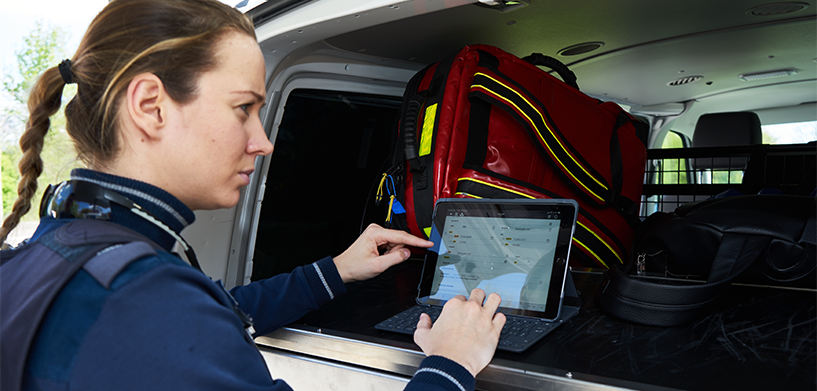In recent years, public safety agencies have faced unprecedented challenges, including talent shortages and burnout among staff, increased services areas and call volumes and a growing need to adopt and implement technologies that meet next-generation requirements. And while agencies can modernize public safety platforms and software solutions with new technologies to address some of these challenges, technology is only one piece of the bigger picture. What about having the strategy to manage change and support stakeholders?
So, when is the right time to modernize your public safety platform? And what is the most responsible way to manage change in your agency? In this post, I’m going to explore the tangible and intangible costs of modernizing your public safety platform.
What are the long-term benefits vs. short-term benefits for IT?
Let’s face it, adopting and implementing a new public safety platform can be a capital and resource intensive project. However, the long-term benefits of modernization far outweigh the short-term challenges. Newer platforms can be more resistant and resilient to cyberattacks, comply with next-generation requirements, improve service quality, offer operational efficiencies and allow your tech stack to be flexible and able to integrate with other software and technology solutions.
Could you continue to maintain your current public safety solutions? Are there short-term benefits to delaying modernization? Yes, and yes. Of course, you’ll save on the short-term capital expenditures of not replacing your legacy systems. But you’ll have the operating expenditure of maintaining systems that might not offer the full benefits of a newer, more modern platform – even if you upgrade. In the future, your agency might have to incur the capital costs of buying and deploying a public safety platform anyway. Are the potential technical risks and operational inefficiencies worth the perceived short-term cost savings? Depending on where your agency is on its digital transformation journey, these are things you need to consider.
How do you improve the dispatcher experience?
When your agency decides to explore new technologies and start the digital transformation journey, please consider the dispatcher experience. A big reason many new technology implementation projects are unsuccessful is that end-users are resistant to change. Learning a new user interface and information architecture is hard.
Your agency probably has veteran employees who are experts on every process in your current public safety platform. While in the short-term, dispatchers might prefer to quickly work with the current technologies they’re comfortable with, are those same technologies creating inefficiencies and workloads that are burning the same dispatchers out? Are the technologies and tools in your public safety platform a contributing factor of turnover?
Truth be told implementing new technologies might only address part of the issue. If you’re in the process of evaluating a new computer-aided dispatching system, bring dispatchers into the decision-making process. Give them a voice at the table. And then once you’ve selected a solution, support and train your dispatchers so that your agency can retain the institutional knowledge, skills and people that power your PSAP or control room.
How can data address residents’ need for transparency?
With implementing public safety platforms and technologies comes a better way to collect, explore, analyze and share data. But why is that important? The answer is twofold. First, if your agency collects better data and has a better way to analyze it with dashboards and reports, your agency is more likely to make informed decisions that improve operations, policies and services.
The second answer is: Residents have started to demand more transparency from the public agencies that serve their communities. Having technologies that give city officials and agency leaders the ability to share incident data quickly and easily is critical to building community trust. New public safety platforms can help officials more clearly communicate how data is used to reduce bias in policing, identify new crime trends or better allocate resources. If the goal is to make communities feel safer, build trust and improve service reliability, implementing public safety solutions that improve data analysis and sharing is vital to the digital transformation journey.
Closing thoughts
The current demands on public safety agencies will continue to grow. And there are too many factors and catalysts at work to ignore reality: the process of digital transformation of public safety agencies – and the industry as a whole – isn’t slowing down anytime soon.
Undergoing technological and organizational change is hard. Managing that change is even harder. Hopefully having a fuller understanding of the longer-term IT benefits, dispatcher experience and changing demands from residents will help you pick the right public safety platform for your agency and community.
Let’s do this together.
Want to learn about Hexagon’s public safety solutions? Contact us today!
Mark your calendar!
We’re preparing now for HxGN LIVE Global 2022. Join us in-person (or online) June 20-23 in Las Vegas for a tailored, hybrid event experience to discuss, debate and encounter the autonomous future.
Enjoy this post? Subscribe to our blog and have industry insights delivered right to your inbox each week. Subscribe now.















